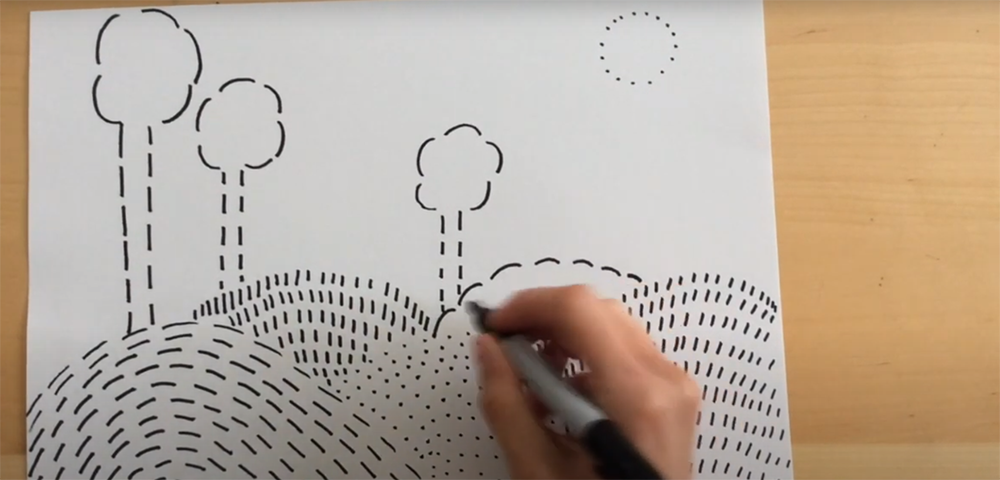
Explore how texture can be experienced through our eyes and hands. Create a drawing inspired by a landscape that recreates texture through the use of lines.
MATERIALS
- White paper (2 pieces)
- Black marker
TRY IT!
- What is texture? Texture is something you can experience through your eyes and hands. Examples of texture are: soft, hard, smooth, rough, bumpy, jagged, pointy, and wet.
- Find a household object and look at it. Is it smooth, bumpy, jagged…? Now touch it, how does it feel? Does it feel like what you imagined?
- On a piece of paper, practice drawing different types of lines (wavy, dotted, dashed, feathered). What do you notice about each line? What kind of texture do they create (i.e. a wavy line appears to be smooth)? Practice drawing lines closer or further apart. How does that change the visual texture of what you drew?
- Now that you have practiced your lines, try creating a landscape (beach, forest, desert, city) just with lines! For example, use one jagged line for a mountain range. Use different lines to create other features such as clouds, a sun, trees, buildings.
- Once you have the lines of your main features drawn in, fill in each feature with its own set of lines. For example, below a mountain range you can draw dashed vertical lines to create the texture of that mountain.
- Assess your drawing: what other lines can you add? How did you use lines to create the textures that you wanted?
GUIDING QUESTIONS
- What kind of texture did you draw?
- If you were to draw a cat’s fur just using lines, which lines would you choose to create that texture?
- What was the most challenging type of texture to draw?
LEARNING BEHIND THE PLAY
- Supports creative decision making
- Introduces concepts of visual and physical texture
- Reinforces observational skills
TAKE IT FURTHER
Challenge yourself and draw a portrait of a pet or family member. Or create an abstract artwork, filling your entire paper up with different types of lines, in different directions.

